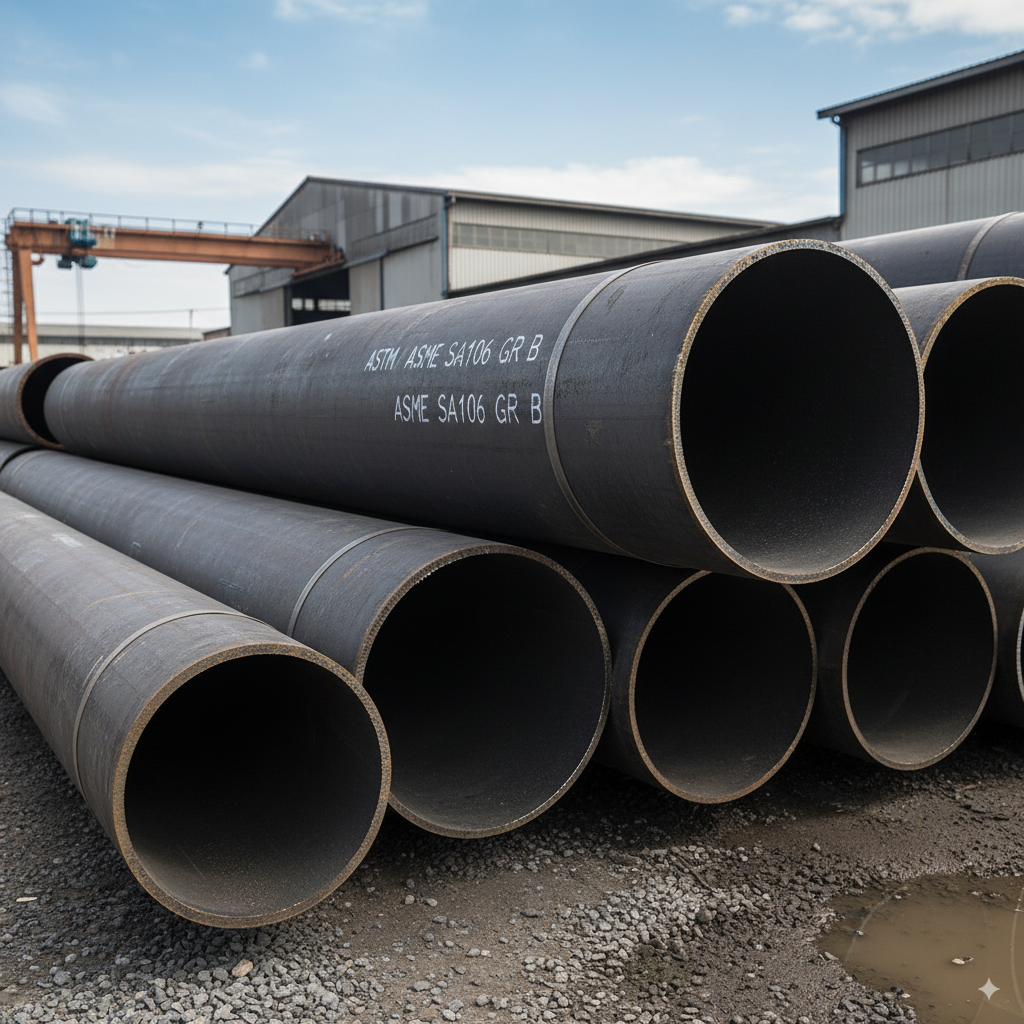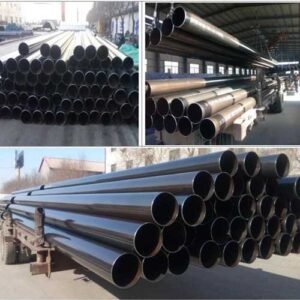When it comes to transporting gas and liquids in demanding environments, ASTM A106 seamless steel pipes (or ASME SA106 pipes) are a top choice. These A106 steel pipes are engineered for high-temperature and high-pressure applications, making them indispensable across numerous industries.
Manufactured to stringent ANSI B36.10 / ASME B36.10 dimensional specifications, A106 pipes offer exceptional reliability.
The “seamless” aspect is key: unlike welded pipes, their uninterrupted construction provides superior integrity and strength, particularly when under stress.
Among the various grades, ASTM A106 Grade B steel pipe stands out as the most frequently specified. Its blend of cost-effectiveness and widespread availability makes it a global favorite.

Key Mechanical Properties:
A106 seamless steel pipes deliver impressive mechanical performance:
Grade B: Minimum yield strength of 240 MPa and minimum tensile strength of 415 MPa.
Grade C: Minimum yield strength of 275 MPa.
Pipes can be produced using either a cold draw or hot finish process. Cold-drawn pipes undergo a normalizing heat treatment at 900°C to optimize their properties.
A106 Steel Pipes Application:
Given their resilience, ASTM A106/ASME SA106 pipes are crucial components in:
- Oil and gas refineries
- Petrochemical facilities
- Power plants
- Boiler systems
- Chemical plants
- Shipbuilding
Essentially, any system requiring the safe and efficient transport of high-temperature and high-pressure fluids and gases will likely leverage the dependability of A106 piping.
ASTM A106 Grade B: A Versatile Workhorse
Often considered equivalent to ASTM A53 Grade B and API 5L Grade B in terms of chemical composition and mechanical properties, ASTM A106 Grade B is a highly versatile carbon steel pipe. Its robust characteristics make it suitable for a broad spectrum of uses, including:
Pipeline systems for oil, gas, water, and mineral slurry transmission
Boiler systems
General construction and structural applications
A106 vs. A53 Steel Pipes: Knowing the Difference
While both A106 and A53 steel pipes are widely used, understanding their key distinctions is vital for proper application:
The most critical difference is that A106 steel pipe must be seamless, ensuring maximum integrity for demanding conditions.
A53 steel pipe, conversely, can be either seamless or welded.
Application Focus:
A106 Pipe: Specifically engineered for high-temperature and high-pressure service, particularly in power generation and similar critical applications.
A53 Pipe: Best suited for transporting air, water, steam, and oil in low- and medium-pressure scenarios across industrial sectors. It’s also a common choice for structural steel
Choosing the right pipe for your project is paramount for safety and efficiency. For applications demanding the highest levels of performance under extreme conditions, ASTM A106 seamless pipes remain the industry standard.
Carbon steel ASTM A106 steel pipe manufactuer & exporter, please contact Rayoung.
Your inquiry will be replied to within 2 hours!
Your Responsible Supplier Partner for Oil & Gas & Chemical Pipeline Products




